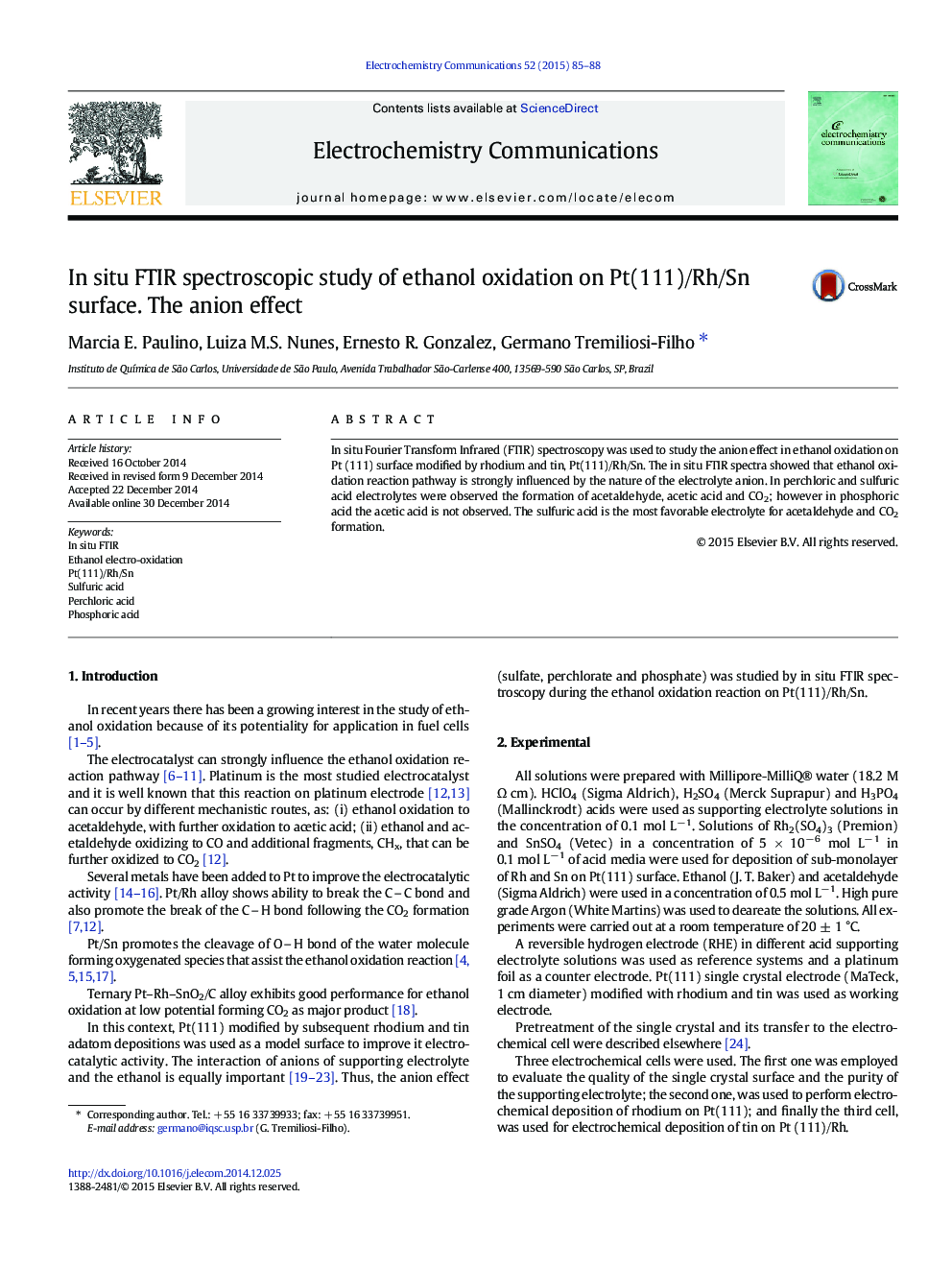| Article ID | Journal | Published Year | Pages | File Type |
|---|---|---|---|---|
| 178935 | Electrochemistry Communications | 2015 | 4 Pages |
•The effect of the anions, sulfate, perchlorate and phosphate, on ethanol electro-oxidation was demonstrated.•The analysis was performed by in situ FTIR.•Surface modified Pt (111) by Rh and Sn was used as electrode material.•In situ FTIR spectroscopic data showed that H2SO4 is the most favorable to acetaldehyde and CO2 formation.
In situ Fourier Transform Infrared (FTIR) spectroscopy was used to study the anion effect in ethanol oxidation on Pt (111) surface modified by rhodium and tin, Pt(111)/Rh/Sn. The in situ FTIR spectra showed that ethanol oxidation reaction pathway is strongly influenced by the nature of the electrolyte anion. In perchloric and sulfuric acid electrolytes were observed the formation of acetaldehyde, acetic acid and CO2; however in phosphoric acid the acetic acid is not observed. The sulfuric acid is the most favorable electrolyte for acetaldehyde and CO2 formation.
Graphical abstractFigure optionsDownload full-size imageDownload as PowerPoint slide
